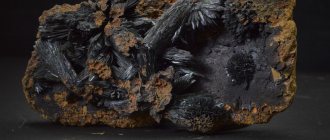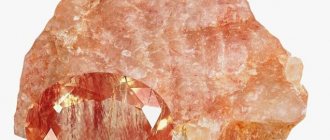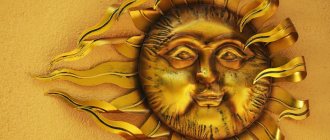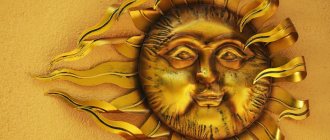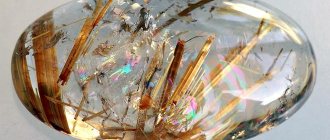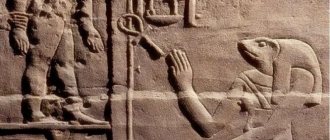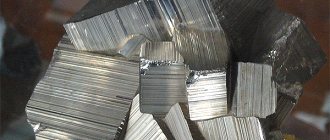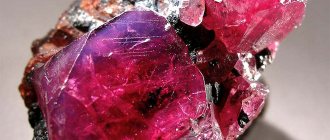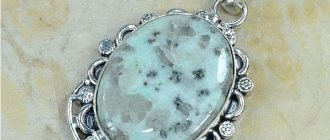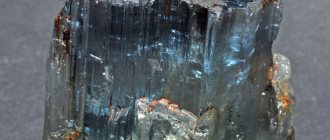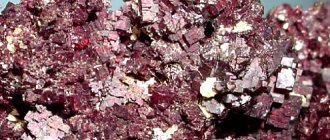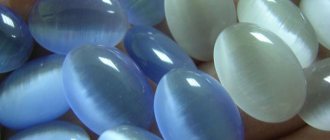History and origin
In 1839, the gem was discovered by a man who had nothing to do with mineralogy, archeology or any related science - hockey player Charles Shepard. This event happened in the American town of Danbury, located in the state of Connecticut. The mineral received its name from the place where it was first found. In the same year, the article “Report on Danburite – a New Mineral Species” was published.
Mineral – Danburite
There are cases in history where danburites were passed off as diamonds. Therefore, another name for the nugget is found - “Mexican diamond”. In addition, danburite externally resembles stones such as citrine, apatite, phenacite, topaz (especially varieties of yellow shades). There is also a consonant name “daMburite”, which is used to call red corundums of artificial origin.
The origin of the mineral can be metamorphic or hydrothermal. Crystal formation occurs in areas with the highest concentrations of boron, which reacts with sulfate clay minerals. The bulk of gems occur among anhydrite strata, marble and low-temperature veins.
Mining locations
Known danburite deposits are located in the following areas:
- USA.
- Russia (Transbaikalia, Magadan, Ural, Primorsky Krai).
- Austria.
- Central Asia.
- Bolivia.
- Mexico.
- Myanmar.
- Switzerland.
- Japan.
The island of Madagascar is famous for the best specimens. The largest, most expensive crystals that have collection value are brought from there.
Physical properties
| Property | Description |
| Formula | Ca[B2Si2O8] or B2O3 CaO 2SiO2 |
| Hardness | 7 — 7,5 |
| Density | 3.0 g/cm³ |
| Refractive index | 1,630 — 1,636 |
| singonia | Rhombic |
| Kink | Rough or conchoidal |
| Cleavage | Imperfect |
| Shine | Glass, greasy when broken |
| Color | Colorless, wine yellow, pink |
Also read: Morion - the mysterious black crystal
Danburite is the main source of boron ore. The composition contains impurities such as strontium, iron, manganese, sodium, magnesium. It is formed by prismatic crystals of the orthorhombic system. It is also found in the form of solid or granular masses and dense stalk-type aggregates.
The yellow shades of the mineral exhibit subtle pleochroism. White, greenish-white, and occasionally blue specimens are endowed with luminescent properties. Under the action of a blowpipe, the stone becomes colorless glass. This produces a green flame. Under ultraviolet light, danburite fluoresces with a blue-green or bright blue glow, and when heated it acquires a red tint.
Danburite jewelry
The stone can be found not only in museums and private collections. Beautiful inserts with danburite can become part of such jewelry as rings, earrings, brooches, pendants, bracelets, necklaces, rings. It can be framed in gold or silver, and different cutting variations allow the creation of expressive jewelry.
The properties of the stone make it possible to distinguish the original from the fake. The appearance of a red color when heated and blue (or green) when exposed to ultraviolet light is a sign of the “correct” danburite. Please note that the stone is not scratch-resistant and does not heat up from the heat of your hands.
Due to its similar prismatic shape and transparency, danburite can easily be confused with topaz. However, topaz is distinguished by its origin, greater density and hardness, and the absence of an oily sheen.
You should keep danburite separately from other things, giving it its own box, casket or bag. Wipe with a regular clean cloth and a mild soap solution under running water at room temperature.
In addition, see how the stone is cut:
Varieties and colors
The mineral danburite is classified not by shades, but by the method of formation and occurrence. There are:
- Hydrothermal mineral. This stone is found in pegmatites, alpine and ore veins.
- The metamorphic appearance is characteristic of skarns and contact-metamorphic rocks.
Behmenites are included in a separate group with their own name - these are danburites in which needle-shaped inclusions are visible. The name comes from the American collector Spencer Bement.
The color of danburites is weakly expressed. Most stones are white or painted in pale tones of yellow. Colorless transparent or brownish-yellow crystals are found. Rare specimens are considered to be stones with a pink or orange tint.
Chemical composition
Chemical theoretical composition: SiO2 - 48.93; B2O3 - 28.32; CaO - 22.75. The composition is characterized by great consistency.
A small part of Ca can be replaced by Na, K, Mg and Fe; Si is replaced by Al.
Neutron activation analysis in danburite from skarn deposits determined Eu - (0.02-0.61) • 10-4% and Yb - (0.04-0.57) • 1o-4%.
The composition of the gas phase encapsulated in vacuoles in inclusions in danburite from the Dalnegorsk deposit is N2, CO, CH4, CO2.
Crystallographic characteristics
Syngony. Rhombic. D2h16- Рnam. a0 = 8.04, b0 = 8.75, c0 = 7.73 A; a0 : b0 : c0 = 0.919 : 1 : 0.883; V = 543.8 A3; Z = 4 (in a setting corresponding to that of paracelsian and other rhombic feldspathic analogues) (Strunts and Nickel, 1997).
Class. Rhombic-bipyramidal D2h-mmm (3L23PC).
Crystal structure
The crystal structure was first deciphered by Dunbar and Makhachki and refined. The greatest difficulty is the accuracy of localization of boron atoms. Precision refinement of the structure of danburite from San Luis Potosí (Mexico) was carried out by Phillips.
In the framework of the danburite structure, two tetrahedral positions are distinguished: T(1) = B and T(2) = Si, one calcium position and five oxygen positions. In contrast to paracelsian, the structure of danburite exhibits strict ordering in T-positions, expressed in the formation of double tetrahedra B2O7 and Si2O7. The oxygen atoms O(1), O(2) and O(3) are common to the BO4 and SiO4 tetrahedra, while O(4) and O(5) are the bridging oxygen atoms in the Si2O7 and B2O7 groups, respectively. The O(4) and O(5) atoms lie on mirror reflection planes parallel to (001) at heights z = 1/4 and z = 3/4. This makes the structure of danburite fundamentally different from the structure of paracelsian, in which the existence of similar groups Al2O7 and Si2O7 seems impossible, as well as in other framework aluminosilicates with the ratio Al : Si = 1 : 1.
The calcium polyhedron can be represented as a 7-vertex (combination of a trigonal prism with a semi-octahedron) with an average distance! Ca-O = 2.461 A or as a 9-vertex (Ca-O = 2.585 A). Coordination 7 is more suitable for comparing danburite with feldspars, showing a linear relationship between the isotropic factors Ca and Na and the Na/Ca-O distance in anorthite, ridmerdznerite and albite structures.
Medicinal properties
Danburite is practically not used in the lithotherapeutic field. It is believed that the healing properties of this mineral are weak and do not have the desired healing effect. However, some experts claim that meditation sessions using danburite crystals have a calming effect. The stone helps relieve physical fatigue, nervous tension, and cope with the consequences of stressful situations.
Also read: Pyrope or Bohemian ruby - a stone for a happy family
Magic properties
While danburite is not famous for its healing powers, the magical properties of this gem have been known for a long time. Wearing a crystal helps the owner to be in real time, to maintain sobriety in any state of affairs. In addition, the talisman will tell you how to correctly “filter” your environment.
The owner of a rare gem becomes self-critical, able to separate successful and unsuccessful actions on his part. In case of great success, the amulet prevents the emergence of an intoxicating feeling of euphoria and pride.
The main property of danburite is the ability to regulate the behavioral tendencies of the owner. The stone will help a person in all endeavors, but only when his intentions are pure. If the crystal senses the emergence of bad intentions, an attempt to deceive or offend someone, the talisman will begin to work against the owner. The first signals will be a deterioration in the psychological state of the body or an exacerbation of diseases. If a person ignores such a sign, the situation will worsen.
The property of the mineral is also noted to be the purification of human karma. The gem helps solve problems that have accumulated over several generations of the family.
Scope of application
Danburite is considered a rare mineral, which has been used in several fields:
- jewelry;
- industrial;
- collectible.
Jewelers rarely use danburite, despite the fact that after brilliant cutting, transparent varieties of this gem are difficult to distinguish from diamond. It's all about the cost of raw materials - for a diamond substitute, this stone is expensive compared to other options for similar imitation. In addition, low prevalence, coupled with a weak color range and market value, reduces the attractiveness of the nugget in the eyes of a jeweler. However, the mineral is perfectly amenable to processing due to its physical properties, so the creators of beautiful jewelry do not neglect this gem.
Also read: Hessonite – a stone of peace and justice
Another thing is collectors. For them, each specimen has mineralogical value. A stone like danburite is a desirable specimen to add to any collection.
In industry, danburite serves as a raw material for obtaining an important element of the periodic table - boron.
How to spot a fake
Danburite is in demand, so on the stone market you can often find its imitation made of glass. You can distinguish a fake from a natural mineral by several signs:
- Real danburite exhibits a fluorescence effect under ultraviolet rays - the stone begins to glow blue or blue-green.
- If the mineral is heated over a fire, it will turn red.
- Natural danburite has a higher specific gravity compared to glass and lower thermal conductivity.
Some specimens of danburite have an external resemblance to citrine, apatite, tourmaline, and phenacite.
Astrological compatibility
(“+++” – the stone fits perfectly, “+” – can be worn, “-” – is strictly contraindicated):
| Zodiac sign | Compatibility |
| Aries | +++ |
| Taurus | + |
| Twins | + |
| Cancer | + |
| a lion | +++ |
| Virgo | + |
| Scales | + |
| Scorpion | +++ |
| Sagittarius | +++ |
| Capricorn | — |
| Aquarius | + |
| Fish | + |
Astrologers believe that danburite will benefit people whose character inclines them towards adventurous actions, pride, and vindictiveness. Such traits are characteristic of Sagittarius, Aries, Leo and Scorpio.
For those born under the constellation Capricorn, wearing a danburite talisman is contraindicated . These people will not be able to coexist with the mineral. For others, the gem is absolutely harmless if you listen to the amulet, which is generous with its hints.
Stone cost
Unprocessed minerals weighing up to 10 g and the same diameter cost around 2,500 rubles. The high price of danburite is justified for faceted specimens. Their cost starts from 2000 rubles per 1 carat, greatly increasing depending on the size and appearance.
Danburite is a reliable keeper of calm and a clear mind, capable of serving the beneficial purposes of the owner for a long time. Any decoration with it will look beautiful.
Do you have danburite products? Framed or pure stone? Write in the comments what changes related to sleep occurred after getting acquainted with the mineral? Share the article or add it to your favorites so you don’t forget to sort out your thoughts with the help of a stone.
